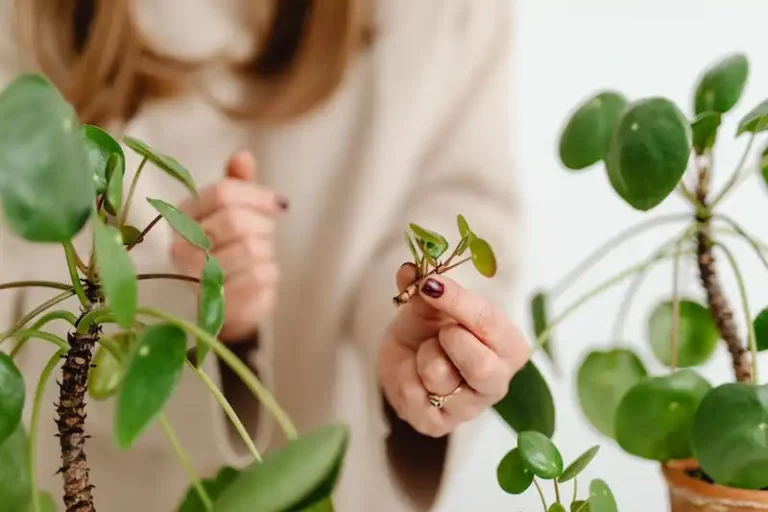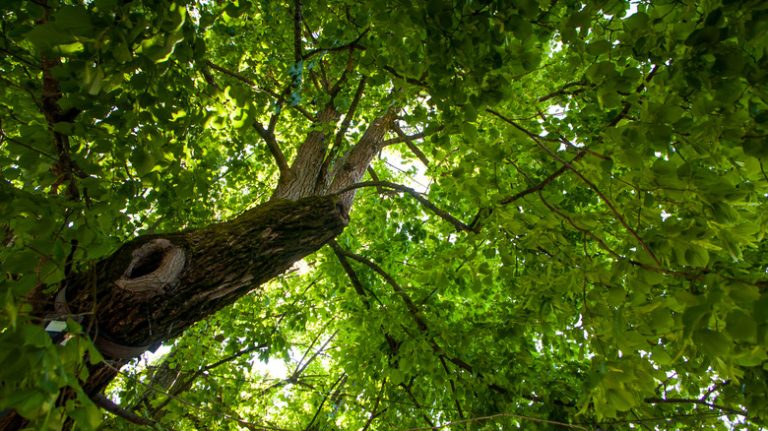Do you love flowers, but find that the deer in your area have a quick appetite for them? Well, worry not! There are a variety of plants, shrubs, and trees that you can add to your garden to keep those pesky deers away. Jane Miller, a renowned horticulturist, suggests a fence around your garden to keep the deers out, but there are also plants that deers don’t particularly like.
When choosing deer-resistant plants, flower lovers should consider a few tips. First, the most likely plants to be eaten by deers are the ones with wide, open flowers. So, if you want to add some color to your garden, it may be better to look for flowers with smaller blooms, like marigold. Additionally, deers tend to avoid plants with strong smells, such as sage and lavender.
For shrubs, the Japanese boxwood (Buxus species) and the compact inkberry (Ilex glabra ‘Compacta’) are smart choices. These shrubs have small leaves that are not very palatable to deers. Another good option is the Pacific ninebark (Physocarpus capitatus), which has thorny branches that deers are likely to avoid. Evergreens like Thuja plicata ‘Harringtonia’ and dwarf Alberta spruce (Picea glauca ‘Conica’) are also resistant to deer damage.
When it comes to trees, the American plum (Prunus americana) and the red maple (Acer rubrum) are among the best choices for deer-resistant trees. The pawpaw (Asimina triloba) and the tupelo (Nyssa species) are also good options. These trees have leaves, fruits, or bark that are not very appealing to deers. Another tough tree is the Oregon grapeholly (Mahonia aquifolium), with its spiny leaves that deers don’t like to face.
“Choosing deer-resistant plants is an important point in designing a garden or landscape,” says Karen Smith, a landscape designer. “Learning about the best plants to use and incorporating them into your garden will surely help you have a beautiful and deer-free space.”
So, don’t let the deers ruin your gardening experience. With the right selection of deer-resistant plants, shrubs, and trees, you can enjoy the beauty of your garden without worrying about deers munching on your favorite flowers!
Deer Resistant Trees
If you’re tired of deer damaging your landscape, planting deer resistant trees is a good option. These trees are less appealing to deer due to their taste or texture, making them less likely to be nibbled on. Here are some deer resistant tree options:
Arborvitae (Thuja species) – These evergreen trees can reach heights/spreads of 10-40 feet and are often left alone by deer.
American Plum (Prunus americana) – This fast-growing tree produces white flowers in spring and orange fruit in the summer. Deer tend to stay away from it.
Taxus (Taxus species) – Several varieties of yews, including the ‘Compactum’ and ‘Densiformis’, are deer resistant and versatile trees that can add a formal or wildflower look to the landscape.
Cephalotaxus (Cephalotaxus species) – Also known as the Japanese plum yew, this evergreen tree is resistant to deer and can tolerate shade well.
Quercus (Oak species) – Oaks, such as the Northern Pin Oak (Quercus ellipsoidalis) and the White Oak (Quercus alba), are generally resistant to deer damage.
Caulophyllum thalictroides (Blue Cohosh) – This woodland plant is deer resistant and is a great addition to a native or woodland garden.
Verbena (Verbena species) – Verbena is a quick-growing and deer-resistant plant that produces beautiful star-shaped pink or white flowers.
Lamb’s Ear (Stachys byzantina) – This ground cover plant has grey-green fuzzy leaves that deer tend to avoid.
Fern (Dryopteris species) – Ferns are often left alone by deer and make a great addition to shade gardens.
Planting deer resistant trees can help protect your landscape from deer damage. Consider incorporating some of these deer-resistant tree options into your garden to create a beautiful and resilient landscape.
Tips On Plant Survival
If you are a deer-plagued gardener, you know how challenging it can be to protect your beautiful plants from these hungry creatures. However, with some smart planning and careful selection of deer-resistant plants, you can greatly reduce the damage caused by deer in your garden. Here are some tips on plant survival:
- Choose deer-resistant plants: When selecting plants for your garden, opt for those that have proven to be less favored by deer. Some examples include lilies, Colorado blue spruce, signet marigolds, nyssa (black gum), Mahonia aquifolium, and peonies.
- Consider plants with strong smells: Deer have a strong sense of smell and are often deterred by plants with strong scents. Bee balm (Monarda), asimina (pawpaw), Russian sage, and thujas (arborvitae) are some examples of plants that deer dislike due to their strong odors.
- Opt for plants with thorny or fuzzy leaves: Plants with thorny or fuzzy leaves are less appealing to deer as they don’t like the taste or texture. Examples include barberry (Berberis), bleeding heart (Dicentra), dusty miller, and lamb’s ear (Stachys).
- Create barriers: Fencing or using mesh netting can help protect your plants from deer. This can be especially effective for more valuable or delicate plants that are at higher risk of being damaged.
- Diversify your plant collection: Planting a wide variety of deer-resistant plants can make your garden less attractive to deer. By mixing different plants with different tastes and textures, you can confuse the deer and reduce the chances of them finding a favorite meal.
- Use groundcover as a decoy: By planting highly deer-preferred groundcovers like hostas or lily of the valley in areas away from your main garden, you can divert deer attention and protect your more desirable plants.
- Make your garden less inviting: Avoid using highly scented fertilizers or mulches, as they can attract deer. Additionally, keeping your garden tidy and free of fallen fruit or other tempting food sources can make it less appealing to deer.
Remember, while no plant can be guaranteed to be completely deer-proof, following these tips and selecting deer-resistant plants will greatly increase your chances of protecting your garden from these hungry visitors.
Deer-Resistant Plants Shrubs and Trees for the Deer-Plagued Gardener
If you’re tired of dealing with deer destroying your garden, it’s time to consider growing deer-resistant plants. These plants, shrubs, and trees have natural characteristics that make them less appealing to deer, so you can have a beautiful garden without worrying about constant damage.
Shrubs
- Bee balm: Bee balm grows in thick clusters of orange or red flowers, and its strong scent keeps deer away.
- Blue juniper: This evergreen shrub has needle-like leaves that deer dislike. Its blue foliage adds an attractive touch to any garden.
- Russian sage: With its silver-gray foliage and delicate purple-blue flowers, Russian sage is a favorite among gardeners. Deer tend to avoid this plant.
- Common sage: The strong, dusty scent of common sage makes it unappetizing to deer. It’s an easy-to-grow shrub that can add a nice touch to any garden.
- Japanese pieris: This shrub, also known as Andromeda, produces clusters of white, pink, or red flowers in the spring. Deer rarely bother it.
Trees
- Black spruce: This evergreen tree is resistant to deer browsing due to its dense foliage and strong scent.
- Japanese plum: Japanese plum trees produce beautiful flowers in the early spring and can deter deer from your garden.
- Heart ear tree: The heart-ear tree, also known as Japanese mistletoe, has thick, leathery leaves that are unappealing to deer.
- Pacific yew: This slow-growing tree is highly resistant to deer browsing and provides excellent screening capability for your garden.
- Harrington’s yew: A rare and beautiful tree, Harrington’s yew is highly resistant to deer browsing. Its unique appearance will stand out in your garden.
Groundcover and Other Plants
- Deer fern: Deer fern is a versatile groundcover plant that deer tend to avoid. It’s perfect for adding lushness to shaded areas of your garden.
- Painted fern: The foliage of the painted fern is highly resistant to deer browsing. Its silvery-gray color adds elegance to any garden.
- Bleeding heart: Although the name may suggest vulnerability, bleeding hearts are actually quite deer-resistant. Their unique heart-shaped flowers are a beautiful addition to any garden.
- Grapeholly: Grapeholly is a low-maintenance groundcover that can easily withstand deer browsing. Its dark purple berries add a pop of color to your garden.
- Cinquefoil: This low-growing plant, also known as potentilla, has small yellow flowers and is known to be deer-resistant.
The plants, shrubs, and trees listed above are just a few examples of deer-resistant options for your garden. Feel free to mix and match these varieties to create a garden that deer will want to stay away from. With these deer-resistant plants, you can finally enjoy a beautiful garden without worrying about deer damage.
Pawpaw Asimina triloba
The Pawpaw, also known as Asimina triloba, is an excellent choice for deer-resistant landscaping. This small tree is native to the eastern United States and is known for its delicious and edible fruit. While the fruit is highly desirable to humans, it has been found that deer are less likely to be attracted to it.
The Pawpaw is unique among trees that are commonly consumed by deer in that it produces black leaves. This makes it less appealing to deer, who tend to prefer plants with green foliage. Additionally, the Pawpaw has a strong odor that deer find unpleasant. The combination of these factors makes Pawpaw a top choice for gardeners looking to keep deer away from their trees and shrubs.
Another deer-resistant option is the Mahonia. This shrub, also known as Mahonia aquifolium or Oregon Grape, is native to the west coast. It has spiky leaves that make it unappetizing to deer, and its yellow flowers are poisonous to them. Mahonia is also a top choice for attracting butterflies, so it adds both beauty and wildlife to your garden.
When choosing deer-resistant plants, it’s important to consider the soil conditions and growing requirements of your garden. Many deer-resistant plants prefer acidic soil, while others can tolerate a wide range of conditions. It’s also important to keep in mind that no plant is completely deer-proof, and the success of your deer-resistant garden may vary depending on factors such as deer population density and natural food availability.
Here are some additional deer-resistant plants to consider:
– Spirea (Spirea spp.): This flowering shrub is commonly known for its beautiful blooms and low maintenance. It is generally not preferred by deer due to its bitter taste.
– Verbena (Verbena spp.): This colorful annual plant is often left untouched by deer. It comes in a wide range of colors and is a great addition to any garden.
– Boxwood (Buxus spp.): Boxwood is a popular choice for creating hedges and borders. It is a dense evergreen shrub that deer are not likely to eat.
– Fir (Abies spp.): Fir trees are typically not preferred by deer due to their strong aroma and sticky resin.
– Oak (Quercus spp.): Oaks are generally not a target for deer, unless they are experiencing food scarcity. The leaves of oak trees are tough and the acorns are not a preferred food source for deer.
– Magnolia (Magnolia spp.): Magnolias are often left alone by deer. The large, glossy leaves of magnolia trees are not a preferred food source for deer.
By choosing a variety of deer-resistant plants and trees, you can greatly reduce the chances of deer damaging your garden. It’s important to research the plants that are native to your area and best suited for your garden’s growing conditions. With careful planning, you can create a beautiful and deer-resistant landscape that will provide years of enjoyment.



